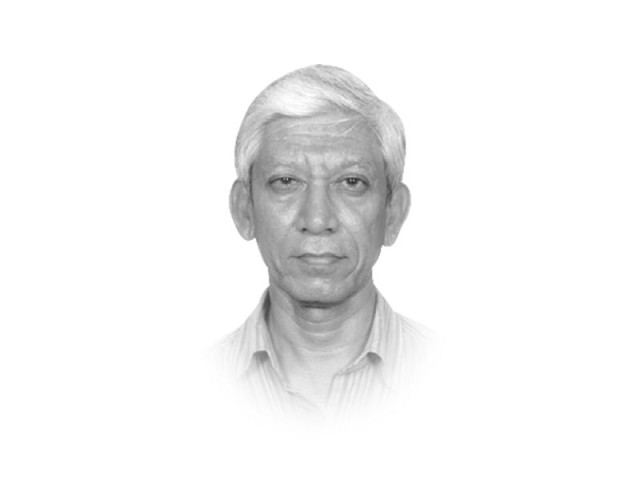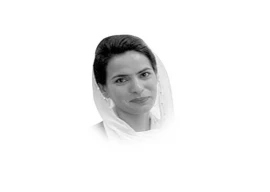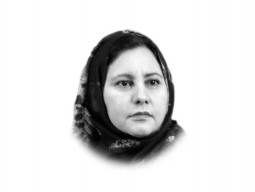
Coming back to Ishtiaq Ahmed’s book The Punjab Bloodied, Partitioned and Cleansed (OUP, 2012), what sets it apart from the usual one-sided, ‘nationalistic’, vested-interest-driven accounts of the ‘sacrifices made for freedom’, and puts it into the category of sincere attempts at finding out and facing what actually happened in cities, towns, villages and hamlets where normal human beings resided, is that he bases his conclusions on the accounts of the victims and witnesses of those events, and that he does not hesitate to acknowledge facts, even if they fly in the face of the officially sanctioned ‘truth’. In this, he is encouraged by the deeply personal pain, I am sure, that he shares with Saadat Hasan Manto, on that the ‘non-state actors’ — that acted swiftly and brutally to serve the rationally chalked out agenda of influential people above them — were never made to suffer any trial or punishment by the state they created. On the contrary, they were accorded the status of ‘freedom fighters’.
Punjab was the single province which suffered the fate of total ethnic cleansing in the wake of the bloodiest riots that took place at the time of partition. This fact became more, not less, relevant because of the subsequent developments, including the fact that in December 1971, after the 25-year-long aberration of East Bengal being a part of the uncomfortable new state ended, Punjab turned into the majority province with concentrated power at all significant levels. Punjab’s experience, and the worldview born out of it, was generalised as the ‘national ideology’ — notwithstanding that several of its features are alien to the other units of the federation.
Ishtiaq Ahmed agrees with other fact-finders that the beginning of ‘the process’ were the March 1947 massacres that took place in and around Rawalpindi. This was what triggered a chain of destruction and suffering that culminated in the attainment of the ‘national’ goals. Let me give you a sample of the evidence collected and carefully weighed by him. First an excerpt from the report of All-India Congress Committee that he quotes on page 174-5: “These were not riots but deliberately organised military campaigns. Long before the disturbances broke out secret meetings were held in mosques under the leadership of Syed Akbar Khan … ex-MLA, Capt. Lal Khan of Kahuta, Tehsildar and Police Sub-Inspector Kahuta, Maulvi Abdul Rehman and Kala Khan MLA, in which jihad… was proclaimed against the minorities and emissaries were sent out to collect volunteers from the rural areas…. The armed crowds which attacked Kahuta, Thoa Khalsa, and Nara etc. were led by ex-military men on horseback… armed with Tommy guns, pistols, rifles, hand grenades, hatchets, petrol tins and even carried field glasses…. First of all minorities were disarmed with the help of the local police and by giving assurances on oaths on the Holy Quran of peaceful intentions. After this had been done, the helpless and unarmed minorities were attacked. On their resistance having collapsed, lock-breakers and looters came into action with their transport corps of mules, donkeys and camels. Then came the ‘Mujahideens’ with tins of petrol and kerosene oil and set fire to the looted shops and houses. Then there were Maulvis… with barbers to convert who somehow or other escaped slaughter and rape. The barbers shaved the hair and beards and circumcised the victims. Maulvis … performed forcible marriage ceremonies. After this came the looters, including women and men.”
Justice Muhammad Munir who represented the Muslim League on the Punjab Boundary Commission and later served as Chief Justice… had the following to say about the riots in Rawalpindi: “The disturbances broke out in March 1947 in the district of Rawalpindi and the adjoining areas and the Muslims were the aggressors. I spoke to the Quaid-e-Azam about this telling him that it was a bad augur and he should either go himself to Pindi or send some responsible member of the Muslim League to assure the minorities that in Pakistan, if it ever were established, the will have equal rights…. He agreed with me and ...replied in a bold and confident manner, ‘Let me get into the saddle and you will not hear any nonsense of the kind.’ However, he ordered Mamdot to go there personally for the purpose….” (P.173)
Ishtiaq Ahmed adds: “It is to be noted that neither Jinnah nor any other leading Muslim Leaguer issued a public statement condemning the atrocities in Rawalpindi. I have checked the main English language newspapers, the Pakistan Times and The Tribune, and found no statement by any Muslim leader on the Rawalpindi riots. In the Jinnah Papers as well, there is nothing on the Rawalpindi riots; nor did any Punjab-level leader of the Muslim League issue a condemnation.”
Published in The Express Tribune, July 7th, 2012.















COMMENTS
Comments are moderated and generally will be posted if they are on-topic and not abusive.
For more information, please see our Comments FAQ